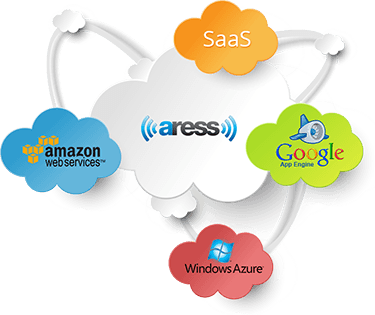The Next Generation of Online Business Tools Can't be Downloaded. Whatever functionality you need done we can create it for you.
We've noticed that more and more of our clients are starting to ask questions about "the cloud," what it really is, how to develop cloud software, and what it means for their business. If you've been wondering about any of those yourself, you're in good company – the businesses that are making smart decision to put more of their applications accessible via anywhere are going to see the biggest benefits in productivity gains in the near future.
If you don't already know, the cloud refers to software that isn't downloaded or installed to any desktop computer. Instead, you access it via the web, the same way you would a website or a social media page. So, when you log onto your bank's website and pay bills from there, you're essentially using cloud computing. The same goes with online shopping sites. What makes cloud development different is that it encompasses more of the ways we traditionally use computers, like word processing and business applications.

Also known as web-based application development or Software as a Service (SaaS), the cloud can help your team work together and serve your customers more efficiently in a number of ways. Here are just a few uses for custom based software package that takes advantage of cloud computing.
Without disks to pass around, or desktops and hard drives to install to, cloud computing makes it possible to use your company's software packages from almost any web-ready device, whether it's a desktop unit, a laptop, or even a smart phone. This can help you lower equipment costs, and increase productivity virtually overnight, and all through the accessibility that comes with developing a custom cloud-based software system.
Keeping critical systems and applications up to date can be an enormous challenge, and one that can overwhelm your IT department, especially when you have dozens or hundreds of computer workstations involved. With SaaS, however, there's no need to install updated files on each unit – just make one change to the application in the cloud, and everyone will automatically have access to the newest version. Not only does this advantage of cloud computing make updates faster and less expensive, but it also reduces the amount of downtime your business experiences from out-of-service hardware.
It's not uncommon, when several employees are working on the same project, to see hundreds (or more) of e-mails being traded back-and-forth, largely owing to the fact that no one knows exactly where the project stands, and delegation and collaboration are difficult. With cloud-based applications, however, changes to common documents are instantaneous, and progress towards goals and milestones can be tracked and measured immediately.
All of these problems, and especially the ones that have to do with sharing information on common projects, are magnified when you have more than one office, plant, or production facility. Through SaaS implementation, you can effectively put an end to miscommunication and the lag time that comes with lengthy e-mails being traded back-and-forth. In other words, cloud computing is a great way to put all of your teams and locations on same page.
Cloud computing is most valuable to the parts of your company that rely on current and up-to-date information the most – particularly sales, customer service, and accounting.